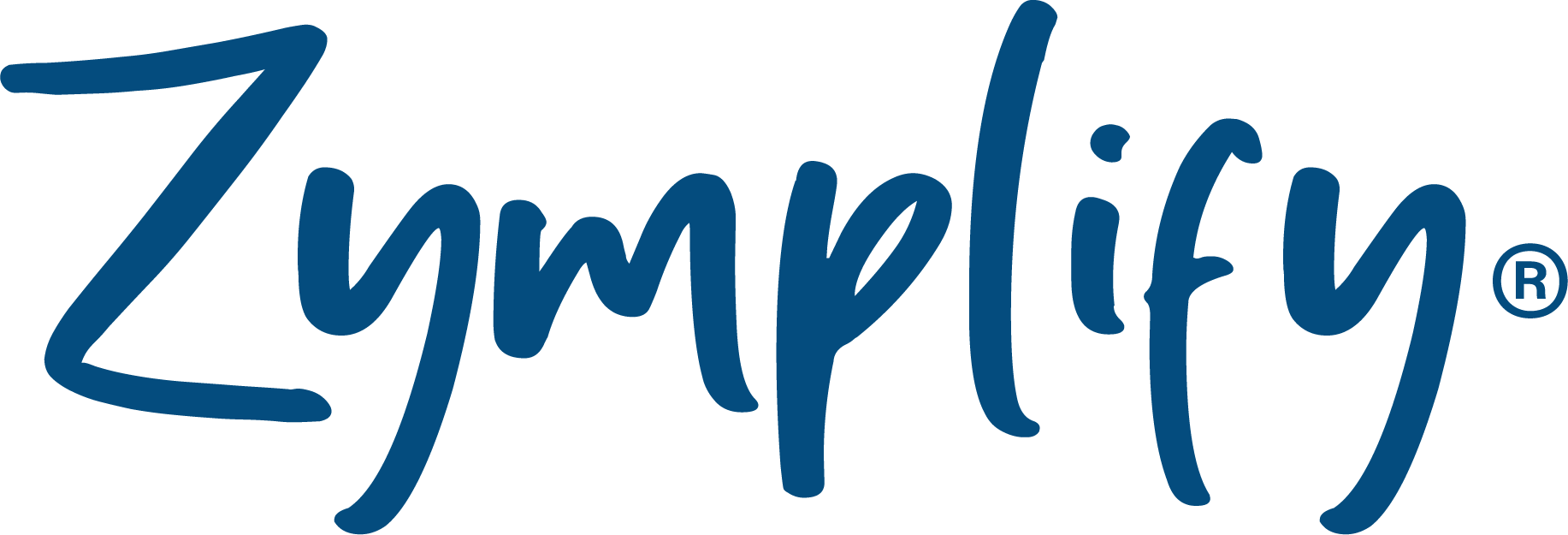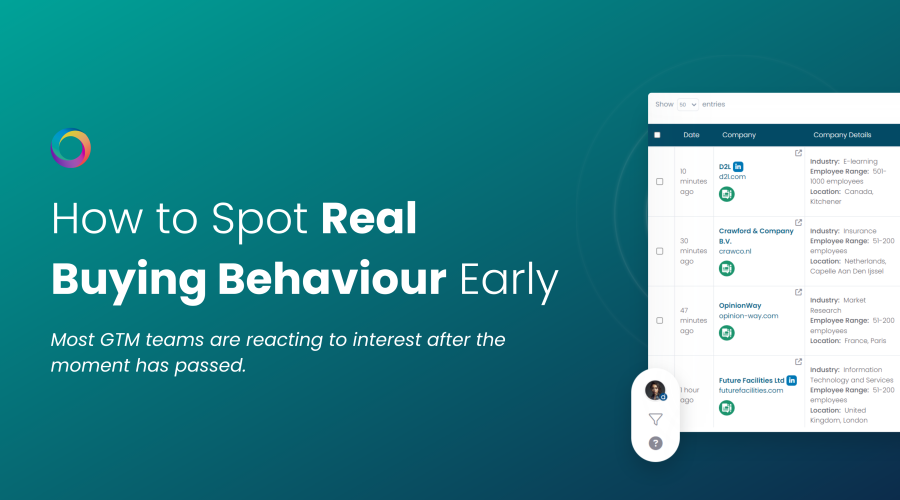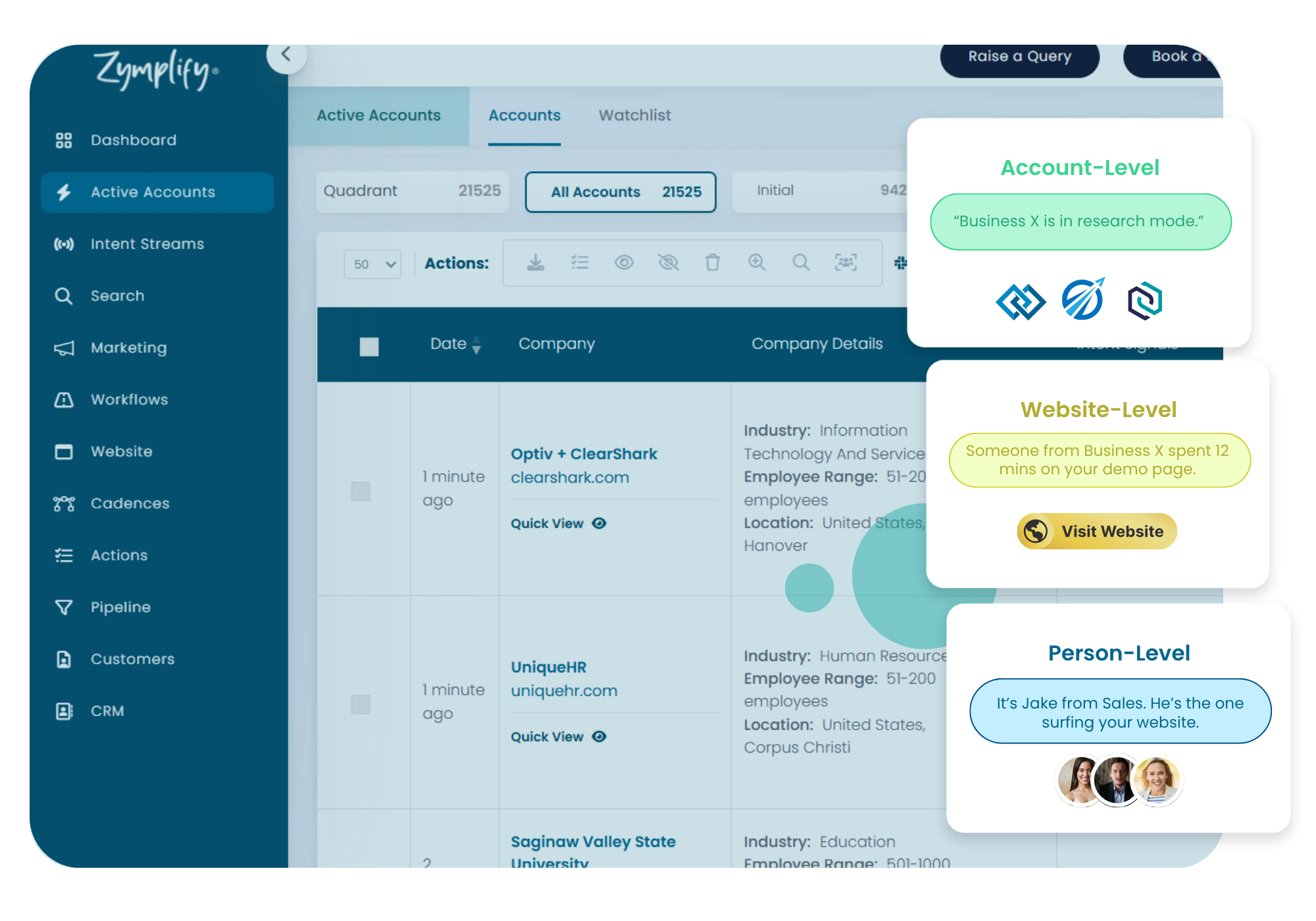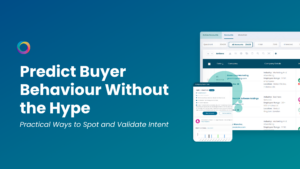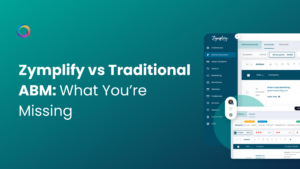Why reacting to form fills is too late — and how to uncover pipeline opportunities before your competitors do.
In B2B go-to-market (GTM), timing is everything.
Your team can have the perfect campaign, the right messaging, and a well-aligned persona — but if you’re reaching out too early (or too late), it won’t land.
And yet, this is where most teams fall short.
We still build campaigns and sales cadences around form fills, lead scores, and downloaded ebooks — the same way we did a decade ago.
But the modern buyer has changed. Dramatically.
They research anonymously.
They consume content without converting.
They loop in stakeholders late — and ghost just as quickly.
The result? Most GTM teams are reacting to interest after the moment has passed.
Here’s what that looks like in practice — and how signal-based GTM gives you the visibility and speed to win earlier in the buyer journey.
The Dangerous Lag in Traditional GTM
Let’s look at a typical buying journey from the buyer’s perspective:
- A pain point emerges — maybe revenue growth is stalling or pipeline velocity is too slow.
- They start researching potential solutions.
- They read third-party reviews, visit comparison sites, and ask their peers in Slack or LinkedIn communities.
- They explore competitor products — anonymously.
- Eventually, if you’re lucky, they download your whitepaper or visit your demo page.
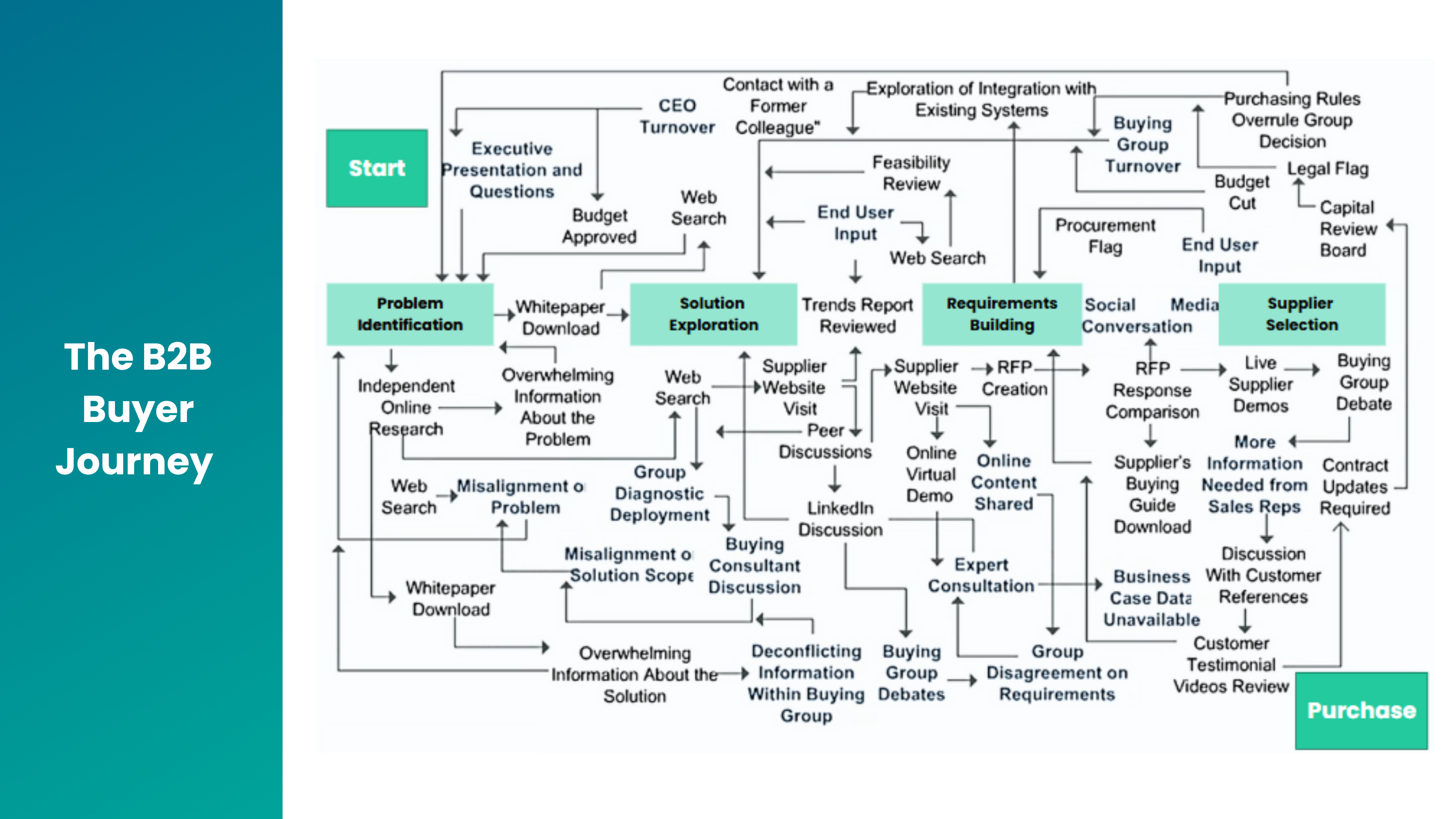
Now flip that journey around. If your GTM strategy only kicks in at step 5, you’ve already missed 80% of the buying process.
In fact:
- 39% of deals begin researching 3–6 weeks before any form fill or contact
- 72% of intent signals originate from contacts not yet in your CRM (Inbox Insight)
- Only 27% of B2B buyers engage with sales during the early research stage (Gartner)
That means most of your audience is invisible — until it’s too late to influence the decision.
The takeaway? Clicks don’t equal clarity.
If you’re only tracking lead capture or email engagement, you’re seeing a sliver of the journey — and missing the signals that matter most.
The Anatomy of Real Buyer Intent
So what should you be looking for?
Real buying behaviour is about patterns, not isolated actions.
Here’s what high-intent activity actually looks like across the buyer journey:
Multi-Source Intent Surges
One visit to your website? Interesting.
A spike in traffic from accounts also researching your competitors on G2 and Foundry? That’s intent.
Surges across multiple platforms validate behaviour. It’s the difference between curiosity and commitment.
Example: A mid-market SaaS account shows search activity on “revenue operations platforms” on Foundry, views Zymplify vs. Demandbase comparisons on G2, and triggers a pageview on your pricing page — all within a 5-day window.
That’s a buying committee circling the solution — and your window to act.
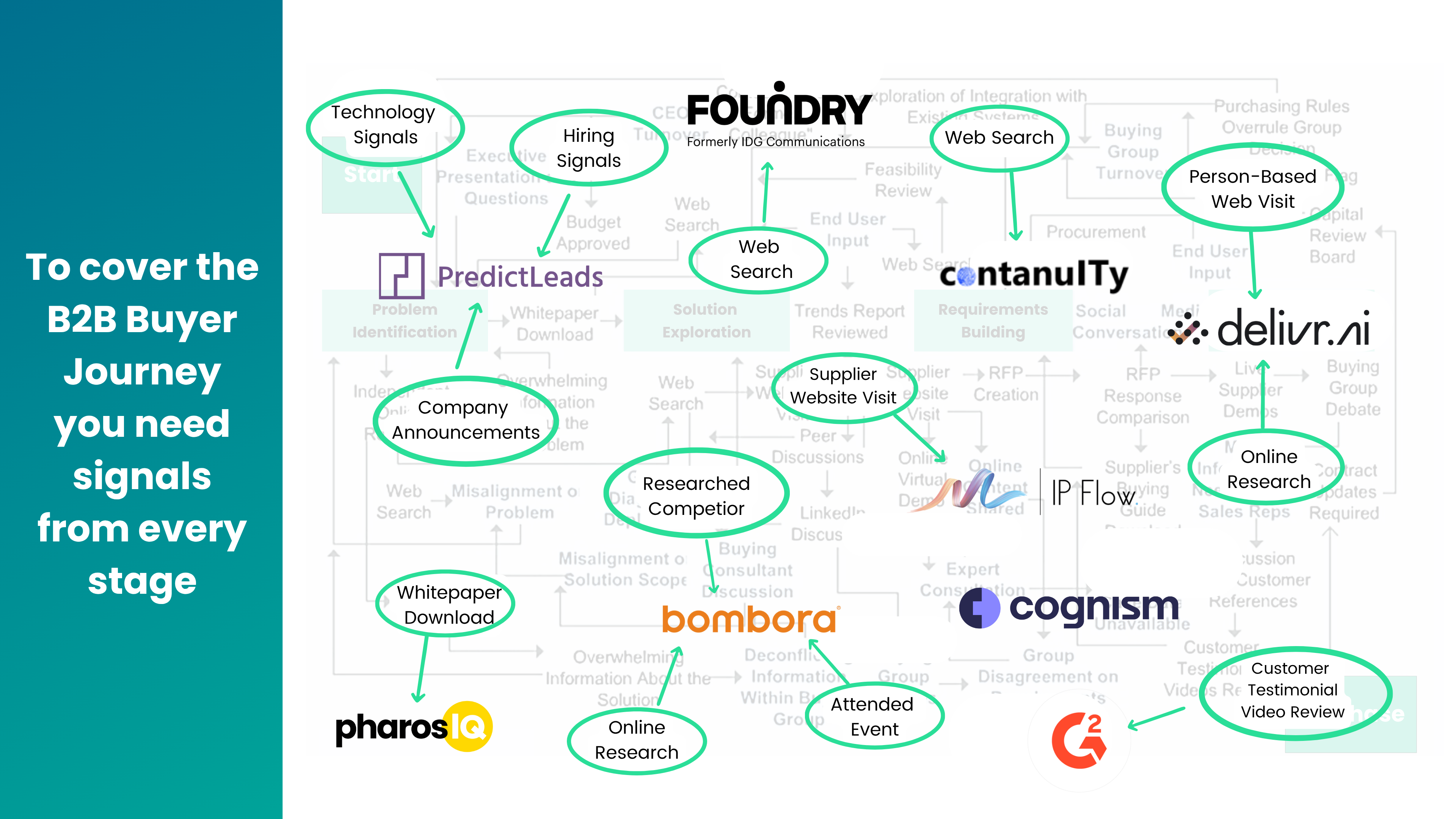
Progression Through the Research Quadrant™
At Zymplify, we developed the Research Quadrant™ to map buyer readiness across four stages:

This model gives sales and marketing teams a shared language for understanding where a buyer is — and what to do next.
Why it matters: A prospect in the “Interested” stage might need nurture content.
A prospect in “In-Depth”? You’ve got a short window before they make a decision — and you need to act fast.
Person-Based Intent: The Missing Link
Most intent platforms tell you which accounts are researching your category.
But they don’t tell you who is doing the research.
Person-based intent fills that gap — by identifying the individual contacts inside an account who are engaging with your topic, brand, or competitors.
Example: A RevOps Manager at a key account downloads a Zymplify use case guide, while their CRO views your ROI calculator. That’s a buying group — and they’re aligning internally.
These signals are essential. They let you:
- Prioritise outreach to the most engaged decision-makers
- Tailor your messaging based on their role, behaviour, and buying stage
- Route high-intent contacts to sales at exactly the right moment

From Insight to Action: Turning Signals Into Strategy
Spotting signals is only step one. The real advantage comes from activating them instantly — before the window closes.
Here’s how smart GTM teams are using platforms like Zymplify to drive real results:
Step 1: Unify Your Intent Ecosystem
Zymplify pulls in over 20 intent sources — from Bombora and Foundry to G2 and proprietary publisher networks — and overlays this with first-party web data, CRM activity, and contact-level behaviour.
The result? One clear, validated signal stream — scored by buying stage and mapped to your ICP.
No more stitching together spreadsheets or second-guessing lead quality.
Step 2: Route the Right Message at the Right Time
With real-time orchestration, GTM teams can automatically trigger the right motion based on buying behaviour.
That might look like:
- Activating LinkedIn ads when an account enters the “Interested” stage
- Launching outbound sales cadences when contacts hit “Active”
- Suppressing accounts that have dropped out of the buyer journey
You’re no longer marketing based on quarters — you’re marketing based on buyer timing.
And that matters. B2B companies that respond to a lead within 5 minutes are 9x more likely to convert them (InsideSales)
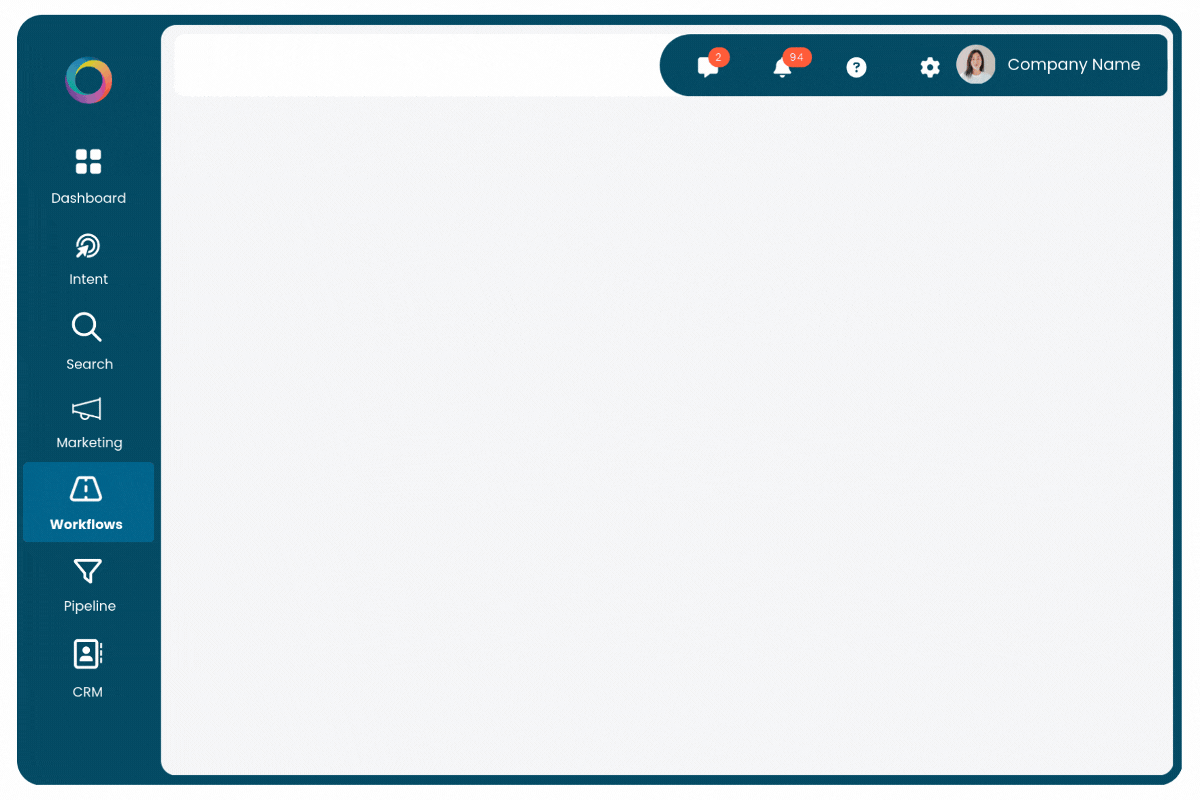
Step 3: Align Sales and Marketing Around Signal
When marketing and sales work from the same intent data — with clear context and buying stage visibility — alignment becomes executional, not theoretical.
- Sales reps know why an account is in-market.
- Marketing knows who to nurture and when to hand over.
- RevOps knows which campaigns and cadences are driving real pipeline.
- It’s not just about doing more — it’s about moving smarter.
Why It Matters Now
The traditional funnel is outdated.
Buyers don’t move in straight lines.
And the GTM teams still waiting on MQLs are losing to the teams moving on signal.
Here’s what the best teams are doing differently:
- They monitor buyer intent across 20+ data sources
- They map buying stages in real time using the Research Quadrant™
- They activate outreach the moment readiness surges
- They replace lag with speed and alignment
This isn’t just marketing theory. It’s GTM reality in 2025.
And it’s giving growing teams a serious competitive edge.
Ready to See Buying Signals Before Your Competitors Do?
Zymplify’s GTM Agent gives you everything you need to uncover real demand and activate it — from one connected platform.
✅ See which accounts are in-market — today
✅ Reveal the decision-makers doing the research
✅ Trigger campaigns, cadences, and ads in real time
All without switching tools or wasting time.
🎯 Try Zymplify’s GTM Agent for Free Today
→ See your live buyer signals
→ Prioritise outreach with precision
→ Convert faster — before your competitors even show up
